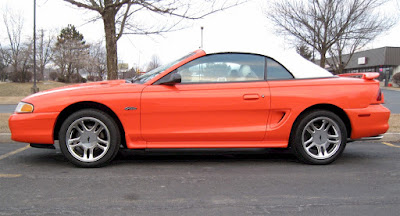 |
| This nice. clean example sports a chromed set of original 17 in. wheels. There are still lots of cars like this out there. |
I never really thought of it as a throw away car, but it seemed that way when I tried to sell it a couple of years ago. I guess that the car was too old for a young guy with a decent job, but not old enough for a guy looking for a classic Mustang project.





